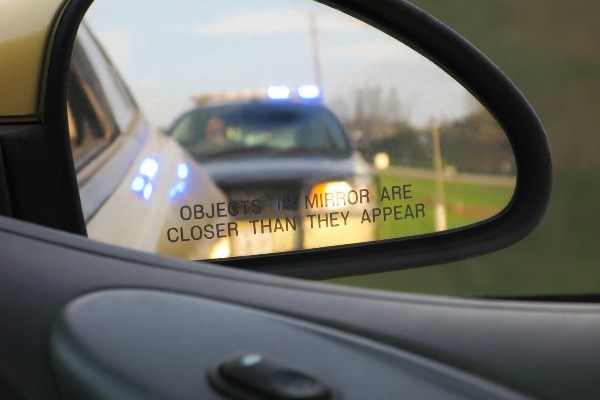Self-driving cars have been a conversational hot topic for years now. The very idea of a self-driving car produces a wide variety of responses. Opinions range from anticipatory fascination to outright rejection of the idea of a machine doing a human being’s job of maneuvering a 2000+ lb vehicle through the streets of America. Although the actual technology is at least a few years away, people often have many questions regarding how these cars work and what the implications will be for drivers. One question that often surfaces is, “Will self-driving cars mean the end of DUI?”
The Current State of Self-Driving Technology
Currently, there are no self-driving cars in mass production today. Many of the large auto manufacturers are gearing up to produce these cars once the technology is available. Big manufacturers like Ford, General Motors, and Volvo are spending millions in developing this technology. Even companies that are not in the automotive field, like Google and Uber, are throwing money into developing self-driving technology.
And even though there are no fully self-driving cars being produced today, there are a lot of automated features that are being offered on more and more cars. A few of these are:
- Lane-centering steering at high speeds
- Adaptive cruise control down to a stop
- Hands-free steering at lower speeds
- Automated parking assist
Unfortunately, regulatory and technological hurdles are making early predictions of mass-marketed, self-driving vehicles by 2025 seem very unrealistic. According to the Victoria Transport Policy Institute in an article published in January 2020, we’ll likely not see major automated features until the 2030s to 2040s, with significant quantities of affordable autonomous vehicles not being available until the 2050s to 2060s.
Levels of Automated Driving
According to the Victoria Transport Policy Institute, there are six levels of automated driving:
- Level 0: No Automation – This car comes with almost no automation. The driver is in full control of the vehicle and performs all driving tasks.
- Level 1: Driver Assistance – The driver is in full control of the vehicle but driving assist features like adaptive cruise control and lane assist may be included in the vehicle’s design. Adaptive cruise control uses a variety of cameras and radars to know when traffic is slowing. It will actually softly apply the brakes as traffic slows, and speed up once traffic resumes normal speed. Lane assist helps weary drivers by alerting them when they veer out of their lane. These features are being implemented in more car models each year.
- Level 2: Partial Automation – The vehicle has partial automation functions but the driver must remain engaged with the driving task and monitor the environment at all times. The functions offered include speed control and steering assistance. The car can detect when it gets too close to another car and when the car is no longer situated in the middle of its lane. When the car detects that it’s too close to another car or is no longer centered in its lane, it will make the necessary adjustments.
- Level 3: Conditional Automation – This is the current advanced state of automation. Under ideal conditions, these cars can actually drive themselves – but the conditions must be ideal and consistent. In other words, if the ideal environment of being on a divided highway at a certain speed changes, then the driver must be at the ready to take over in an instant, without notice.
- Level 4: High Automation – The vehicle is capable of performing driving functions in most environments and road conditions. While the need for human assistance is minimal, the driver has the option to control the vehicle.
- Level 5: Full Automation – This vehicle is capable of performing all driving functions under all conditions and has no need for a driver at all. In fact, these cars eliminate the need for a steering wheel or brake pedals. Although human interaction is not needed at all, the driver may have the option to control the vehicle.
The Need for a Driver at All Times

Of course, there is always the issue of other drivers. Until all the cars on the road are automated, there will be a mix of self-driven and human-driven vehicles sharing the streets. This means that automated vehicles must have the ability to react to human errors in logic and driving mistakes instantaneously. This is where much of the public’s discomfort regarding self-driven vehicles originates. It just seems that human drivers should always be at the helm, ready and alert, and able to take control in emergency situations.
This implies that the human behind the wheel must be sober. Think about it. Even if your car largely drives itself, if and when a human is in overall control of a vehicle, this means that – by law – the human must be sober. In fact, the simple act of putting the keys into the ignition, turning the car on, and putting the car into gear requires a person to be sober or face a DUI. This is not likely to change anytime soon.
So yes, you can and will get a DUI if you are operating a self-driving car under the influence in the future. As a matter of fact, it happened in California in 2018 when a man was arrested for DUI after being found asleep in a Tesla that was in autopilot mode and traveling 70 miles per hour down a highway.
That being said, it seems that the traditional approach to the law and the definition of “operating” a vehicle is currently being challenged. The National Transportation Commission in Australia is pushing for DUI laws to exclude operators of dedicated automated vehicles. Their reasoning, of course, is that the driver is not actually operating the vehicle. In addition, they reason that allowing an intoxicated person to use an automated vehicle without fear of arrest will actually make the roads safer.
You Need an Experienced Defense Lawyer If You Are Arrested for DUI
Whether or not people with automatic, self-driven cars will be subject to DUI or not is a question that is sure to be hotly debated. The legal landscape for this question will likely change as rapidly as the technology that gives us self-driving cars. But for right now and for the foreseeable future, if you or a loved one has been arrested for DUI in Colorado, you need an experienced attorney by your side to defend you.
A DUI can cost you jail time as well as large amounts of money. You do not want to handle it alone! Call us for a free consultation or fill out our online contact form. Let us put our experience to work for you today.

